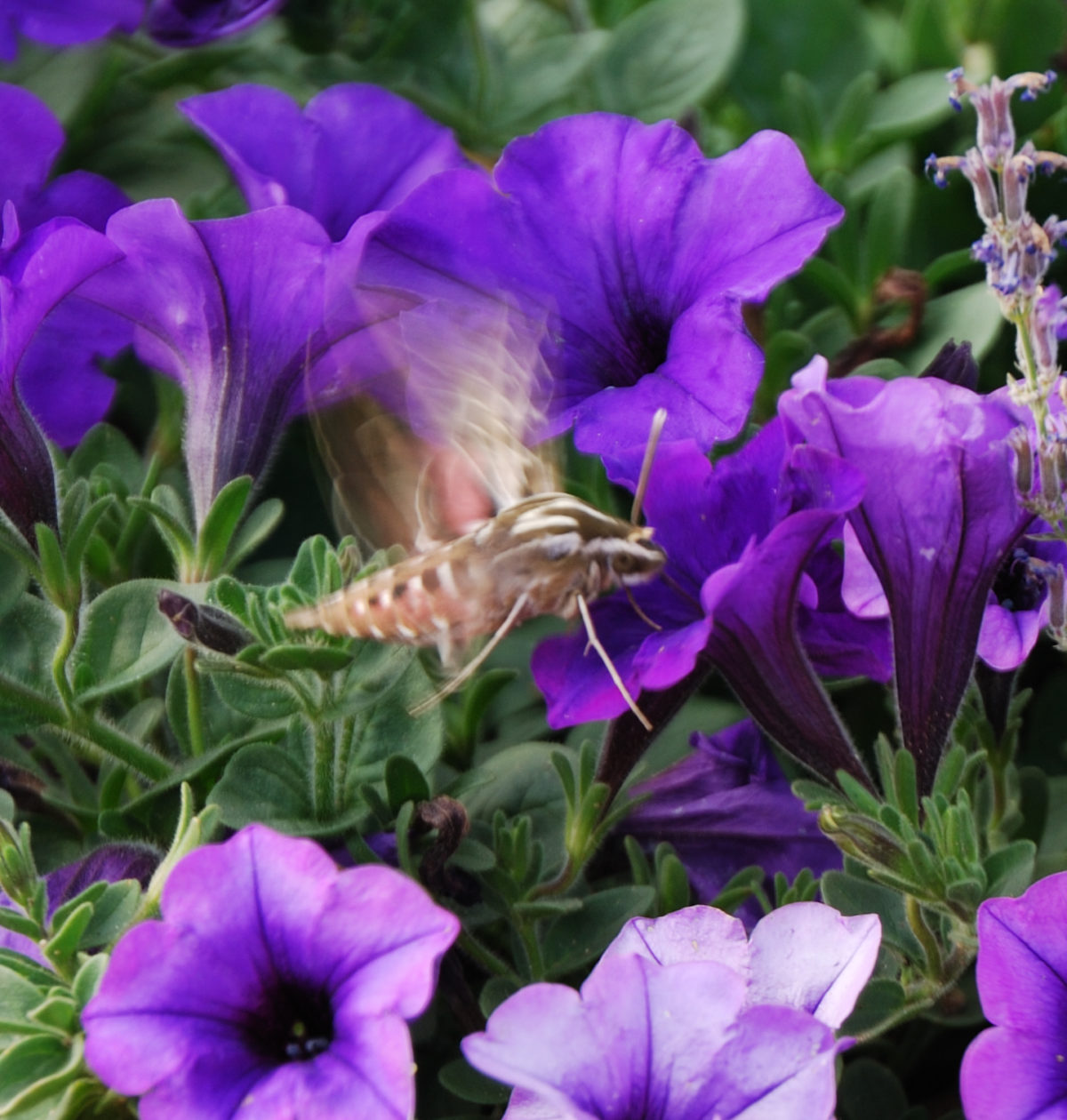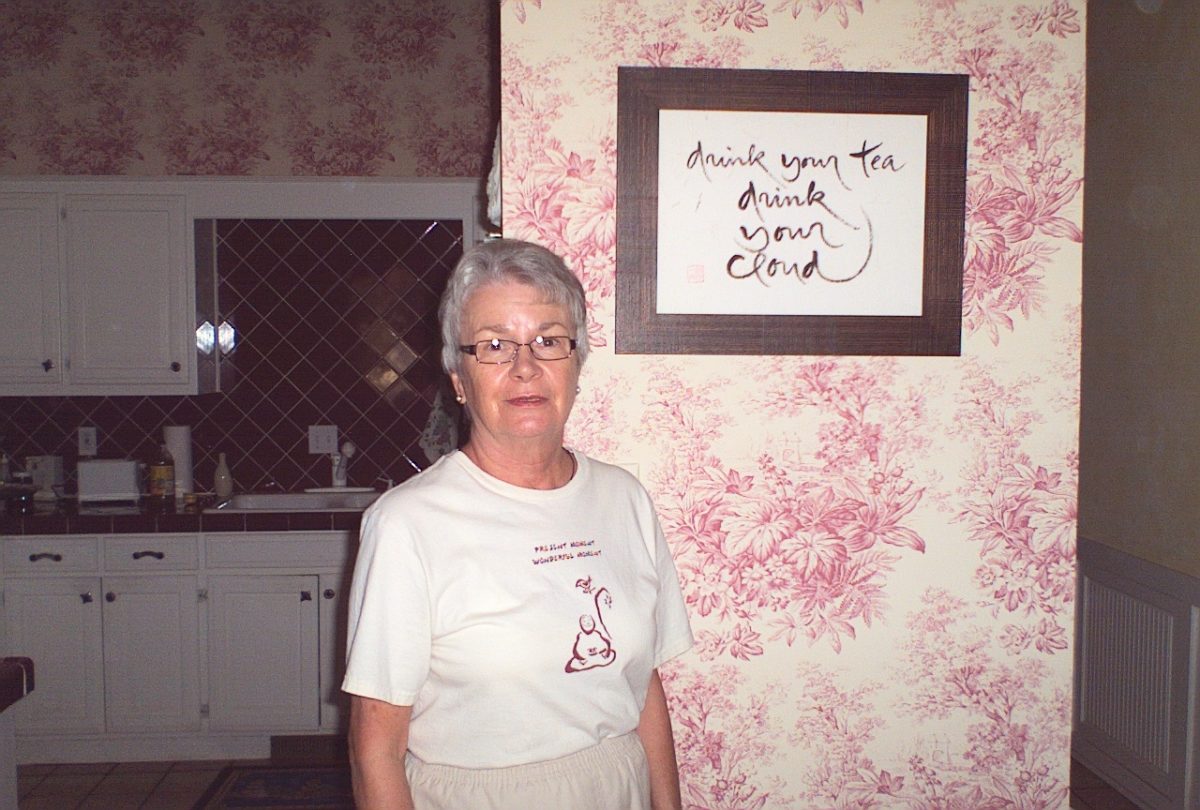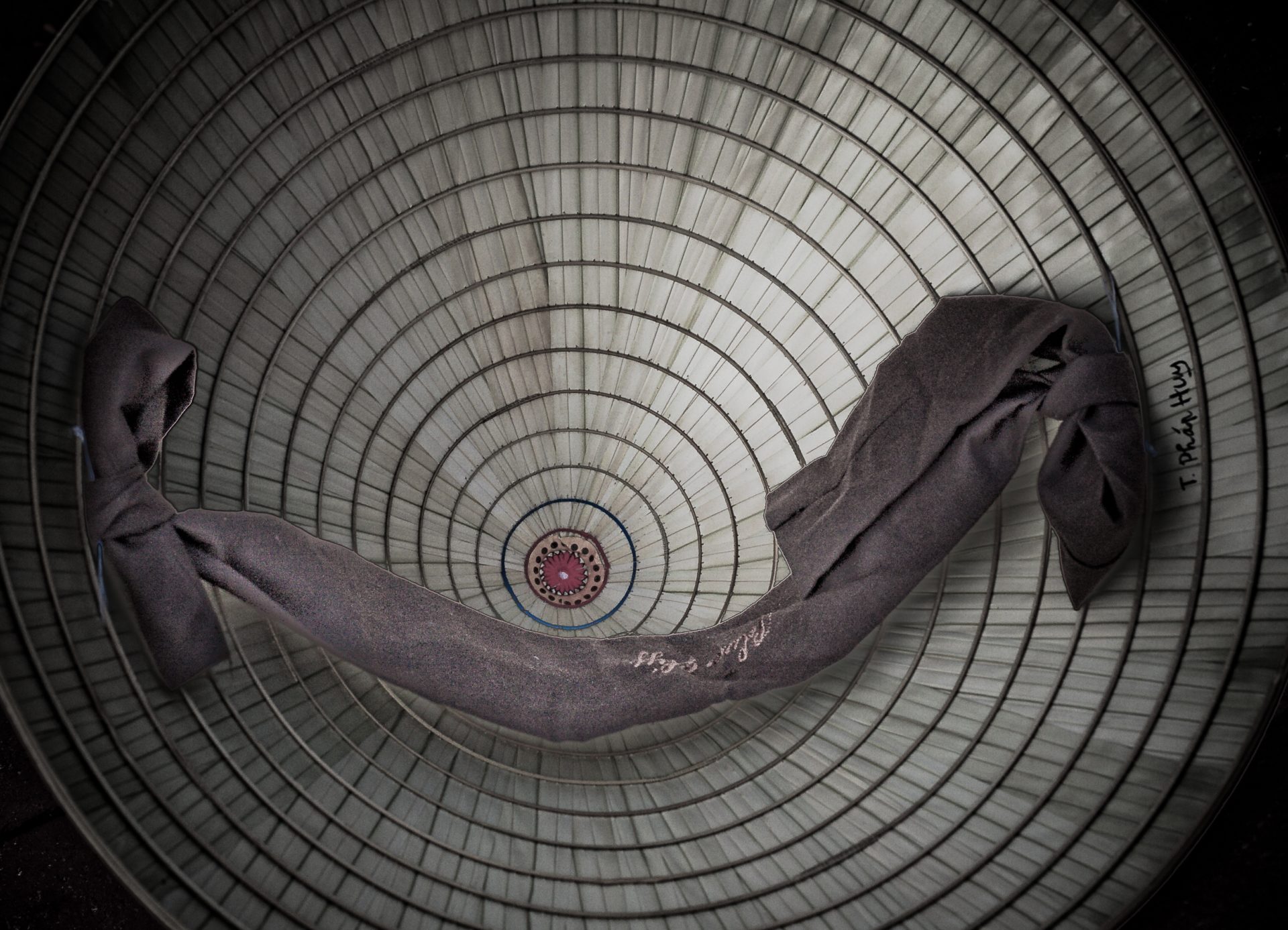A Practice with Dying and Death
By Haven Tobias

Some friends and I joined in a practice to write about death and dying.* When we shared what we had written, we learned that the following drama was everybody’s worst-case scenario.
I am in a nursing home where, even if someone cared enough to prop me up so that I could look out the window,
A Practice with Dying and Death
By Haven Tobias

Some friends and I joined in a practice to write about death and dying.* When we shared what we had written, we learned that the following drama was everybody’s worst-case scenario.
I am in a nursing home where, even if someone cared enough to prop me up so that I could look out the window, I would see only a parking lot. The nursing home is so institutionally gray and dull, and my room is so gray and dull, that I cannot tell what time of day it is, much less what season. There are no flowers or plants in my room. Whatever it is I am dying of, it is taking a while, and I have been lying in this bed a long time, becoming a drooling, pants-wetting, shriveled-up old lady. I am being warehoused, away from contact with human beings, other than a nurse’s aide, whose sole expression seems to be annoyance. I can no longer see to read, or watch movies, or do jigsaw puzzles. There is no one to read to me, or play Cyrano to my Roxanne, bringing me the news of the day. There is no one to spread lotion on my dry and cracked back and feet. There is no discernible end to this nightmare—no death, just a drawn-out dying by increments.
There was an end to the nightmare—it was a writing exercise, not immediate reality. My friends and I could conceive of more horrific circumstances, such as being kidnapped and tortured to death. But all of us agreed that the worst-case scenario, lingering on without loving care in an institutional setting, was worst precisely because it was common and probable.
While I kept trying, as I wrote, to turn my attention to compassion for all those who languish in nursing homes, honesty compels me to admit I was wallowing in self-pity for that lonely little old lady that was me.
Fortunately, the exercise did not finish with the worst-case scenario. It was with some relief that I moved on to the second part of the exercise, writing about my ideal scenario.
Ideally, I know in advance that I am dying. I can take a gentle leave of my friends and family and remove myself to the sea, to a cottage along the coast in Massachusetts or Maine. I have my wits about me. The pain comes and goes, and when it comes I am able to breathe and say, hello, I know you are just pain. Perhaps my daughter is with me. I know she understands I am at peace about my death. She knows I am at peace about my dying, too.
It is late spring or early autumn. It is warm, and I am still physically able to walk to the shore when the day becomes night and sit on the beach, listening to the waves and watching the stars. As first light comes and I watch the sky over the water turn to pearl, I have enough acuity to remember the closing gatha of the Diamond Sutra: “Thus should one view all of the fleeting world; a drop of dew, a bubble in a stream, a flash of lightning in a summer cloud, a star at dawn, a phantom and a dream.” I lie down in the sand and die.
Sharing our ideal death made all of us more emotional than sharing the worst-case scenario. There was fear that the ideal was so much less likely than the worst case. Almost all of us wanted to die on a shore or mountaintop or under a tree, and not in a hospital or nursing home, but we feared the odds.
We were ready for the third part of the exercise: what can we do, here and now, to make a life worth dying for? Most of us, perhaps to calm our emotions, became very practical. We made promises to work on wills and to speak with family members about worries and fears and wishes and feelings. But we also understood that preparation for death is not limited to practicalities.
As for myself, in preparation, I have read and reread Thay’s book No Death, No Fear. Thay teaches that when the fear of dying is exacerbated by the fear of death, it is like receiving a second arrow in a wound. Thay also teaches about recognizing choices. Choice permeates every aspect of our life, the way we live it, and the way we die.
There is no element of choice in death. The self that I call “I” will die. But I can choose to overcome fear of death.
There is an element of choice in dying. Whatever the causes and conditions of my dying may be, I can choose to participate in the process with equanimity. I have two daily practices to help me understand the process and to water the seeds of equanimity.
The Five Remembrances
I practice every day with the Five Remembrances, a meditation taught by the Buddha:
This body is of the nature to grow old. This body cannot escape old age.
This body is of the nature to decline in health. This body cannot escape ill health.
This body is of the nature to die. This body cannot escape death.
Everyone I love, and everything I have, I will one day have to let go. I cannot escape this.
I am the heir of my karma; my karma is my heir.
This teaching of the Buddha about the impermanence of life in the historical dimension, in the “mundane world,” is a core practice in Buddhism. I am also mindful, as I practice the Five Remembrances, of Thay’s teachings about the ultimate dimension, or what some would call nirvana. Awareness of the ultimate dimension informs both my understanding of the mundane world and my grasp of the reality of no-death.
This body is of the nature to grow old. This body cannot escape old age. But I am not this body, and this body is not me.
This body is of the nature to decline in health. This body cannot escape ill health. But mindfulness practice guides me to protect my health as best I can, in my choices of what to eat or not eat, and what to drink or not drink, and in the choices I make about my activities and my attitudes. The reality of interbeing, which is the truth that no self is a separate self but rather “inter-is” with every other being, teaches me that every choice I make has consequences for myself, for my family, and for society. I cannot choose to eat a steak every day, I cannot choose to drink a bottle of wine every day, I cannot opt to watch a violent program on TV instead of taking a walk outdoors, and pretend there are no personal and societal consequences.
This body is of the nature to die. This body cannot escape death. But I was never born, and I will never die. When causes and conditions were sufficient, I manifested in this body. When causes and conditions cease to be sufficient, I will no longer manifest in this body. But just as surely as the morning star is still “there” even after the sun rises, so shall I be. There is a famous Zen koan: what did you look like before your grandparents were born; what will you look like in one hundred years?
Everyone I love, and everything I have, I will one day have to let go. I cannot escape this. We all have to leave our stuff behind. That house we put so much of ourselves into, that car we thought was so important to own, the jewelry, the gadgets—all of it will turn to junk, before or after we’ve left. The important thing is love, and because the ultimate reality is the reality of interbeing—that we all contain one another—love does not die. Love continues in every kind word I have ever spoken and every smile I have ever smiled. Kind words and loving smiles get passed around the world and back again.
I am the heir of my karma; my karma is my heir. Where I am now, physically, emotionally, and spiritually, is the sum total of all that I have done before now. Karma is the consequence of every action I’ve taken. But karma is not my fate. If I have had a tendency in the past to act in a certain situation with anger or anxiety, I can choose, now, not to act in that situation with anger or anxiety. In every moment, I can choose to nourish my seeds of peace and compassion rather than feeding my seeds of anger or fear.

Never the Same Path
My second daily practice is a walking meditation. I always walk with Thay, and breathe with the Buddha. Here, now. Walking, breathing. Walking with Thay. Happy feet, peaceful steps. Breathing with the Buddha. Releasing, letting go.
I walk the same path every day at the same time. But of course, it is never the same path and it is never the same time. I know, because the whole cosmos has told me on these walks that I am not walking the same path at the same time. The whole cosmos tells me that nothing lasts forever as it is now. And that is a blessing.
If everything lasted forever as it is now, five-year-olds could never become teachers or nurses or mothers or fathers. New friendships could not begin. Relationships could not deepen. Everything is in the process of change. Sometimes if we are fearful or grieving, it feels like loss. But it is not loss; it is transformation.
When I start my walk, I count the stars. I count a couple of dozen without even moving my head. After twenty minutes, I look again and count maybe fifteen stars. I walk a little longer, and it is dawn, and there is only the morning star. Are all the stars gone? They are here. It’s just that you can’t see them. They are not gone. Night has become morning in the natural process of change. But maybe indeed one of those stars has transformed. I could have been seeing the light of a star that exploded zillions of years ago. Is it gone? Or are we all stardust, interchanging our energies?
I close my walk, as I hope to close my life, with the Diamond Sutra: “Thus should one view all of the fleeting world; a drop of dew, a bubble in a stream, a flash of lightning in a summer cloud, a star at dawn, a phantom and a dream.”
These two daily practices, sitting with the Buddha’s Five Remembrances, and walking with Thay’s interbeing, help me to develop equanimity about death and dying. And, oh, about life and living too, and the gift of the present moment.
* This practice was adapted from one recommended by Joan Halifax Roshi in her book Being with Dying. She advises that the exercise be done in community, so each writer has support. On two separate occasions, I facilitated different members of my meditation group sharing this practice. We found that intimacy is one consequence of this exercise and that therefore trust and respect are essential.

Haven Tobias, Embracing Freshness of the Heart, facilitates the Norman Meditation Group, which includes practitioners from many traditions. She is a semi-retired lawyer.

